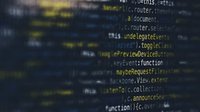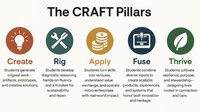December 22, 2017
The Ed-Tech market is maturing, and starting to spend at a very fast clip. Now that 85% of students in America have access to a computing device of some kind for a significant portion of the school day, either through a BYOD or 1-1 initiative, the market is focusing on software.
Right now schools wrangle between the “frameworks” stance of buying Learning Management Systems where teachers craft learning paths, and the sophisticated courseware that contains personalized paths and a whole lot of algorithms. Meanwhile, they have mostly started to reign in the random App purchase by teachers to try to get to some sort of cohesive digital curriculum map.
New Dimension #1 – Savvy School Customers
One new dimension to watch for that will be impacting schools will be the super-sophistication of Millenial parents who are shelling out billions of dollars for learning Apps for their children well before they even arrive in school. Way back in 2013, a PBS KIDS Survey noted that 68% of those parents already had, or intended to purchase apps for their children ages 2 to 10. 77% of them tended to select Apps and pay for them based on learning content.
Since 2013 the sheer number of learning App option has increased by a factor of ten times what it once was, and the user experience design has gone up.
With ten of billions being spent by parents and students on learning Apps, the “consumers” of education outside of school are arriving in schools with expectations of similar great user interface and user experience (UI/UX).
This is putting way more pressure on schools to level up the quality of digital navigation offered through their own software.
New Dimension #2 – Unexpected PD Needed
The fact that a consumer-expectation of interface is now being leveled at schools also means that leaders and teachers need to come to the table to understand UI/UX, as well as systems leadership, analytics, software security, and the effects this all has on the process of learning. Notice no mention of teaching and learning because some of this software is doing the distribution of knowledge through crafted design, so the role of the teacher is shifting. What is it shifting to? Understanding UI/UX and “software levering,” or “gating” for systems that the teacher brackets a student into certain content or throws open the floodgates to all of it. In addition, unraveling navigation mistakes and providing highly customized outside-the-courseware assignments. Becoming more hands-on and “human” as the counter-balance and reward of the reliance on digital. This new dimension, when complicated with teachers not trained to maneuver between framework systems, no-system-systems like content managers (Google, Microsoft), and full courseware, are making for one heck of an awkward teenager stage of transitioning schools.
This is a new and unexpected area for PD that is needed. (See Zia Learning and 2gno.me for solutions, and join Knowstory Learning Groups on important topics with all the other school leaders so everyone can get through this together. Plus, new a new EduJedi Academy is coming in 2018 by Learning Counsel to help leaders.)
New Dimension #3 -- Faster Pace
The rate of change has accelerated to what the Learning Counsel evaluates is a 6-years-to-every-one-year of change experienced way back in 2013. This means everyone feels like they are in the middle of the wash cycle, spinning uncontrollably. In the annual Digital Curriculum Strategy Survey of 477 schools and districts of 2017 about to be released in January, four new imperatives made the top 10, showing a big jump forward for the market. “Individualized/Personalized Learning” came in second, “Analytics & Tracking” came in fourth, “Standards Alignment” came in eighth, and Credit Recovery, tenth. Again, none of these had even made the top 10 before, showing the market is in a big revision of strategy.
This giant churn is normal in tech maturity. Every other market has been through the same thing. It’s the Education market’s turn.
New Dimension #4 -- Increasing Teacher Pressure
Building pressure to shift actual pedagogy. See #2 for why, but to put the pressure in perspective, of the 477 schools and districts reviewed, the majority of all teachers are still using Whole Group teaching as their number one pedagogy. This is going to cause a whole lot of misfiring of the use of technology, which mostly takes aim at personalization and an entirely changed pedagogy.
New Dimension #5 -- New Tech Opportunities
Schools are dead-center the purchase of massive quantities of digital curriculum. Eighty-eight percent of schools intend to purchase more in 2018. This is a sea-change for every other flanking technology from audio-visual (think millions of head-sets and audio-feedback like Lightspeed Technologies), for hands-on robotics and science programs of all kinds now needed to balance, music, art, extra-curricular, virtual reality, coding, and more.
Part of this new dimension is going to be the market demanding better software, finding favorites and un-liking others. All part of the churn and speed.
Stay tuned for our January 2018 release of Survey data for more insights.











